I released a set of preseason quarterback rankings back in September, and as you might expect, they were received warmly and nobody had any complaints about where their favorite players ended up.
After six weeks of the 2020 season, it’s time to revisit the rankings and make some adjustments given the play we have seen so far. In some instances, things really haven’t changed and the players “are who we thought they were” — to quote the late Dennis Green. But in other cases, six weeks have caused us to completely rethink our opinions on certain passers.
What follows is the adjusted rankings after Week 6 of the 2020 NFL season.
1. Russell Wilson, Seattle Seahawks
Change: Up 1
The Seahawks have finally permitted Russell Wilson to cook, and the chef has been firing out Michelin-star meals pretty much every week of the 2020 season so far. The only thing keeping him from the No. 1 spot before the year was the idea that Patrick Mahomes had been doing the same thing with higher volume. But now Wilson has had a chance to match that volume, while Mahomes hasn’t been quite at his previous level. Any other contenders to the crown have had at least one bad hiccup in their seasons through six weeks, so Wilson is the best quarterback in the NFL right now.
2. Patrick Mahomes, Kansas City Chiefs
Change: Down 1
Patrick Mahomes doesn't seem as unstoppable as he has been in the past, but even on a relatively off day, he still makes two or three throws that are highlight-reel material. And he has had less help this season with an offensive line that continues to disintegrate around him as the season wears on. Even with his PFF grade through six weeks being at the bottom end of the top five, he is still the most feared quarterback in the game and liable to beat any defense the second it relaxes. As such, this is as far as you could drop him in any rankings.
3. Aaron Rodgers, Green Bay Packers
Change: Up 4
I flirted with the idea of putting Rodgers at No. 2 on this list, but the Tampa Bay implosion capped him at No. 3. Had he sailed through that game the way he has in every other encounter this season, there would have been a legitimate argument to rank him as the best quarterback in the game. He was leading the NFL in PFF grade through five weeks, and we know from previous play that he has this level of performance within him — even if the last time we saw it was some time ago. Rodgers has returned as an elite quarterback at the peak of his powers but now has to bounce back after an ugly game in which he had his first three turnover-worthy plays of the season.
4. Tom Brady, Tampa Bay Buccaneers
Change: Up 1
Brady moving up only one spot is a testament to how much faith we had that his struggles last year were almost all down to the lack of receiving help in New England. Ironically, Brady has been dealing with a relative lack of weapons with the Bucs due to injury, but he still leads the league in big-time throws — with 20 through the first six weeks. And the 21st-year signal-caller has only three turnover-worthy plays, even if one was an ugly pick-six. Brady may never get back to being the best quarterback in the game again, but he is still well capable of being in the top five.
5. Ryan Tannehill, Tennessee Titans
Change: Up 16
Tannehill is one of the biggest movers in the entire rankings list. Heading into the season, the sample size on elite Tannehill was just too small and the back catalog of tape on a far more pedestrian player was too extensive. But through six weeks, he hasn’t regressed in many of the areas that seemed a certainty and has maintained a top-five PFF grade (89.1), bouncing back from the only average game of his season to have his two best performances. Tannehill may still be riding a hot streak, but he’s clearly better as a Titan than he ever was in Miami.
6. Deshaun Watson, Houston Texans
Change: –
There was a line of thought from some (me among them … oops) that losing DeAndre Hopkins might force Deshaun Watson to become a better quarterback, improving his foundational process to find the right open receiver and not just default to throwing it at Hopkins when in doubt. If that’s going to happen, it’s going to be a slow burn. Watson has had periods of notable struggles so far this season as he endures a nightmare schedule. That being said, as the defenses have gotten easier, we have seen his performances improve, and he remains an incredibly talented quarterback who has 17 big-time throws already despite that brutal slate.
7. Lamar Jackson, Baltimore Ravens
Change: Down 4
Lamar Jackson is another player whose regression was always likely. He produced a touchdown rate of 8% last season, a figure double that of even good rates. It was unsustainable, and that has proven true so far this season, dropping to a still very impressive 6.2%. Baltimore’s run game has lost a little juice after Marshal Yanda‘s retirement, and Jackson hasn’t been quite as effective when they are forced to the air. Dealing with an injury hasn’t helped, either, but it looks like the MVP-level play of 2019 was his ceiling more than a stop along the way to even greater heights.
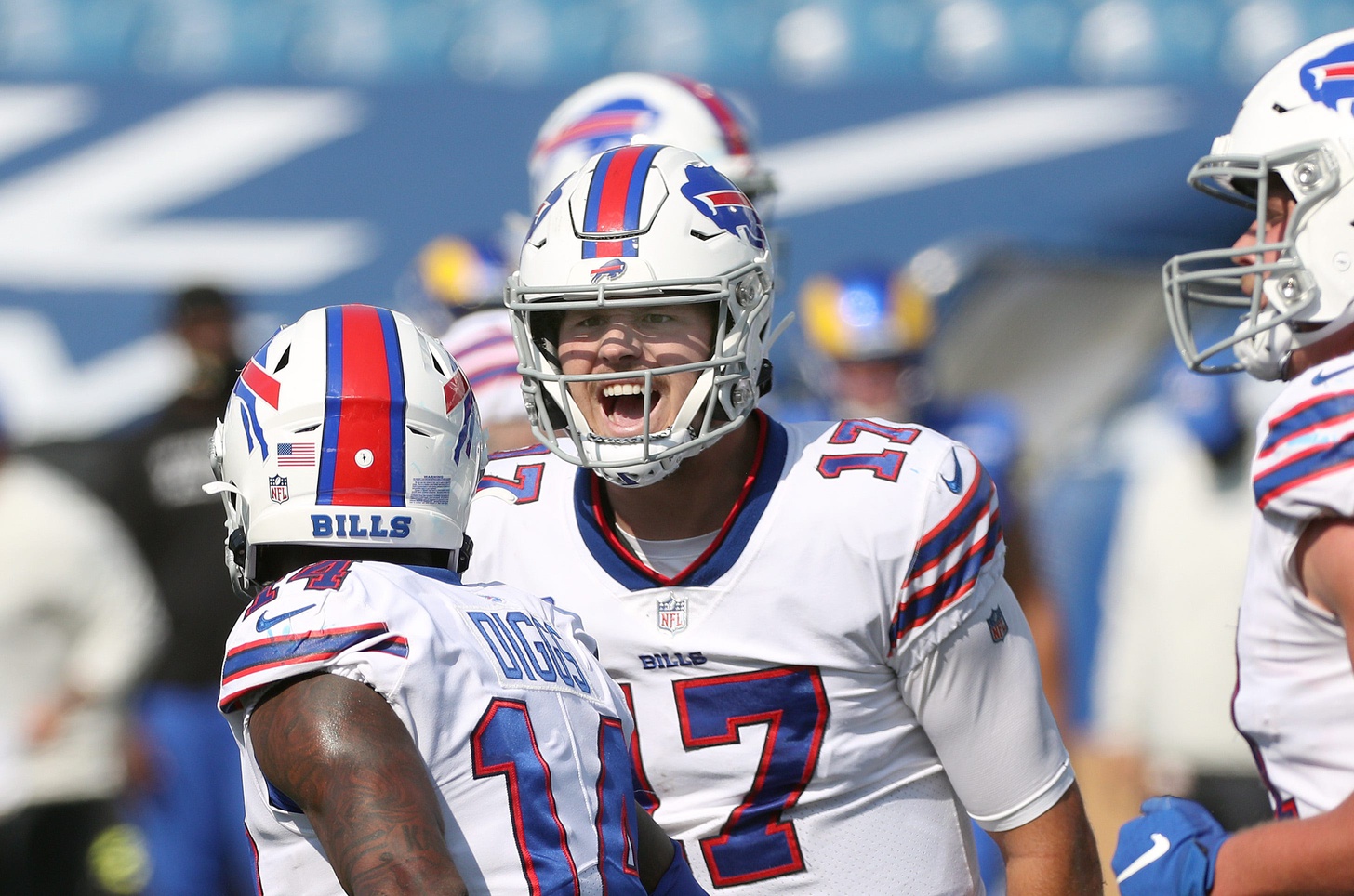
8. Josh Allen, Buffalo Bills
Change: Up 19
Josh Allen made the single biggest jump of any quarterback in the rankings from the preseason, just in time to show some wobbles in his play the past two weeks and make me wonder if we all jumped the gun. Even with those two rough outings, Allen’s 85.9 PFF passing grade is a top-five mark and more than 20 grading points higher than any other year of his career. He has a 79.3% adjusted completion rate, 10 percentage points better than his previous high. Allen looks to have taken a huge step forward in his development, but he now needs to avoid crashing back down to earth after a couple of more familiar inconsistent games.
9. Matt Ryan, Atlanta Falcons
Change: Down 1
It would be easy to dismiss Ryan as washed up and a symptom of the decay of the Atlanta Falcons team that was so close to Super Bowl glory just a few seasons ago, but while he hasn’t been good, his play has been far from the biggest problem with the team. This past week, we saw that he can still perform at a high level when he has his weapons available. When kept clean from pressure this season, Ryan has a PFF grade of 88.6, an adjusted completion rate of over 80% and a passer rating of 103.0.
10. Ben Roethlisberger, Pittsburgh Steelers
Change: Up 2
The return of Roethlisberger hasn’t just been a huge boost to a team that had to endure Mason Rudolph and Devlin Hodges at quarterback in his absence, but it’s been an interesting study in adaptability, as he has returned a different player stylistically than the one that left. Roethlisberger has become more of a facilitator than a big-play machine for this offense, and it’s working. He has the highest passer rating of his career (109.1) so far but also the lowest average depth of target we have seen from him at just 7.2 yards, two full yards per attempt shorter than his career baseline.
11. Jared Goff, Los Angeles Rams
Change: Up 6
Goff is a very environment-dependent quarterback, but we shouldn’t dismiss how well he does play when the environmental conditions allow him to. Through six weeks, he has the No. 6 PFF passing grade (84.3) and No. 5 overall mark (85.3) and has just three turnover-worthy plays, the same number as Aaron Rodgers had in only one game against Tampa Bay. Goff’s offensive line has improved, so he is better able to deliver the ball to Cooper Kupp and Robert Woods, and while he hasn’t been as aggressive as in the past, he has been impressively efficient, with the Rams ranking sixth in the league in EPA per play on offense.
12. Derek Carr, Las Vegas Raiders
Change: Up 2
Carr is a difficult quarterback to pin down. He is clearly a technically very proficient player who is generally accurate with the ball and gets it out of his hands quickly, but his box score numbers flatter his performance a little, and he hasn’t been quite as good as some might believe. Though he has just one interception this year, he has six turnover-worthy plays, three of which have come on third down when he has had to force a play. The Raiders offense has done a good job building around Carr, and he has found his deep ball again in 2020, which makes that entire offense a much more difficult team to contend with.
13. Kirk Cousins, Minnesota Vikings
Change: Down 2
Like Carr, Cousins is a quarterback who has all of the ability but consistently seems to miss a piece of the puzzle along the way. Cousins himself was intended to be the final piece of the puzzle to a championship-caliber roster in 2017, but now that roster has fallen into disrepair, and Cousins can’t elevate it by himself. His numbers and PFF grade (81.4) this season are solid, but so much of his play has been in garbage time to put some gloss of respectability on a game that has already gotten away from the Vikings.
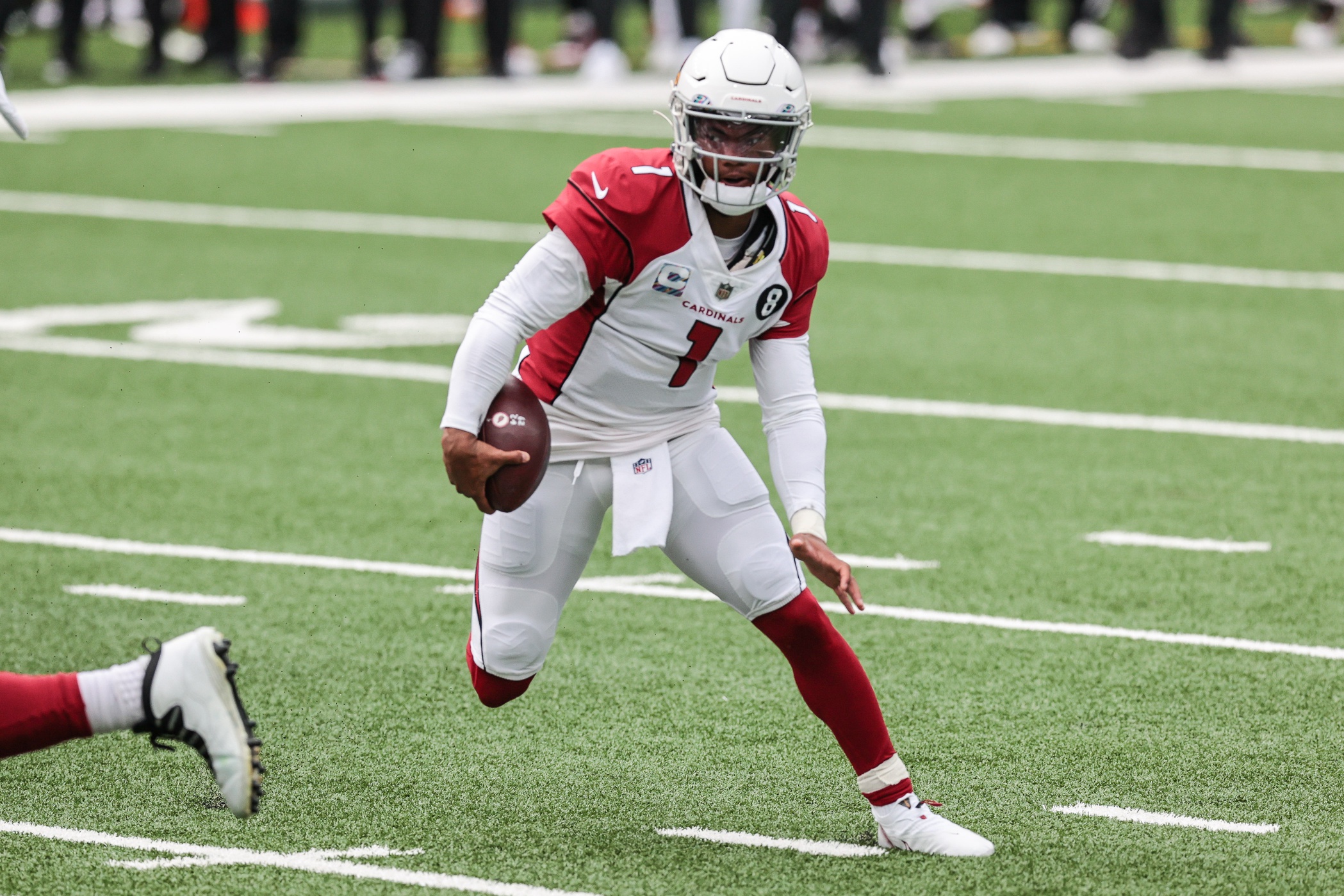
14. Kyler Murray, Arizona Cardinals
Change: Up 5
Murray’s passing hasn’t taken the step forward many people expected this season, but the Cardinals have raised his floor so much by involving him in the running game far more. He leads all quarterbacks in scramble yards (189) but is also second only to Lamar Jackson in designed quarterback rushing yards (181), giving him a healthy lead on Jackson for overall rushing yards at the position. He also has six rushing scores on the season, as he has become a real problem for defenses in the red zone. If and when Murray does take that step as a passer, he will be one of the game’s most feared players.
15. Joe Burrow, Cincinnati Bengals
Change: Up 7
The Bengals' future is looking great if Burrow survives his rookie season behind the offensive line, because his play this season has been impressive outside of one disastrous game against Baltimore. Burrow has been under pressure on 36.6% of his dropbacks but has remained poised and efficient at quarterback. There are some negatives to his rookie performance so far, and he has completed just two deep shots in six weeks, but overall the good far outweighs the bad, and he climbs the rankings significantly despite us already holding a pretty favorable view of how he would perform out of the box.
16. Justin Herbert, Los Angeles Chargers
Change: –
Herbert has been a huge surprise for everybody so far this season, including his own team, who didn’t deem him ready to play and had to be convinced that they couldn’t hand the starting job back to Tyrod Taylor when he got healthy. Herbert has 12 big-time throws already, and though his turnovers have been bad, they have been relatively few and far between. He has also been dealing with the Chargers’ poor offensive line and has the fifth-most passing yards under pressure, despite only playing in four games. The only thing keeping him this low is how unsustainable some of his current numbers are. He has the best PFF grade in football on third down (91.6) right now, which will inevitably decline.
17. Carson Wentz, Philadelphia Eagles
Change: Down 7
Wentz opened the season up in a funk that looked terminal at times. He looked as though he could barely throw a football, and even though he was making solid decisions and reads, you wouldn’t know it by where the ball was ending up. However, he pulled himself out of the tailspin somewhere in the middle of the 49ers game, and since that point, his PFF grade has been around 20 grading points higher, even if the wins haven’t yet followed. Wentz has been dealing with his team's massive injury crisis — which hasn’t helped — but if he continues his improved play, he will likely claw his way back up the rankings.
18. Matthew Stafford, Detroit Lions
Change: Down 5
The Detroit Lions were a popular dark horse pick heading into the season, but much of that optimism centered around the play of Stafford before getting hurt last year. That play featured some wild outliers that were certain to regress to the mean, and that’s exactly what we have seen. His average depth of target has dropped two full yards from last year, and his PFF grade on those targets has fallen 10 points, leading to the Lions offense being generally significantly less potent. This is more in line with the Stafford we have seen in the past — capable of great things, but usually not playing at that level.
19. Jimmy Garoppolo, San Francisco 49ers
Change: Down 4
Injury and a disastrous attempt to battle through that injury have put a fairly significant asterisk next to any Jimmy Garoppolo data point from 2020, but at the very minimum, he has done little this season to suggest he deserves to be higher on the list. Kyle Shanahan’s offense is masterful, a quarterback’s best friend, but despite that, Garoppolo’s only game with a PFF grade above 67.0 came against the New York Jets — the worst team in football. Garoppolo can execute this offense well when healthy, but he is looking less and less capable of hitting the ceiling he showed us in that small sample size back in 2017.
20. Drew Brees, New Orleans Saints
Change: Down 16
I’m not sure any player has fallen as far as Drew Brees this season. For the first couple of weeks, he looked completely cooked, with PFF grades between 57.0 and 64.0 for the first three games of the year, making a run of six such performances dating back to last season. His deep ball was gone, and his short-area accuracy was also waning. The last two weeks have at least shown the accuracy still remains, and he has become a little more aggressive with the football. Brees has just eight big-time throws on the year, one fewer than Nick Foles, who didn’t start until Week 4.
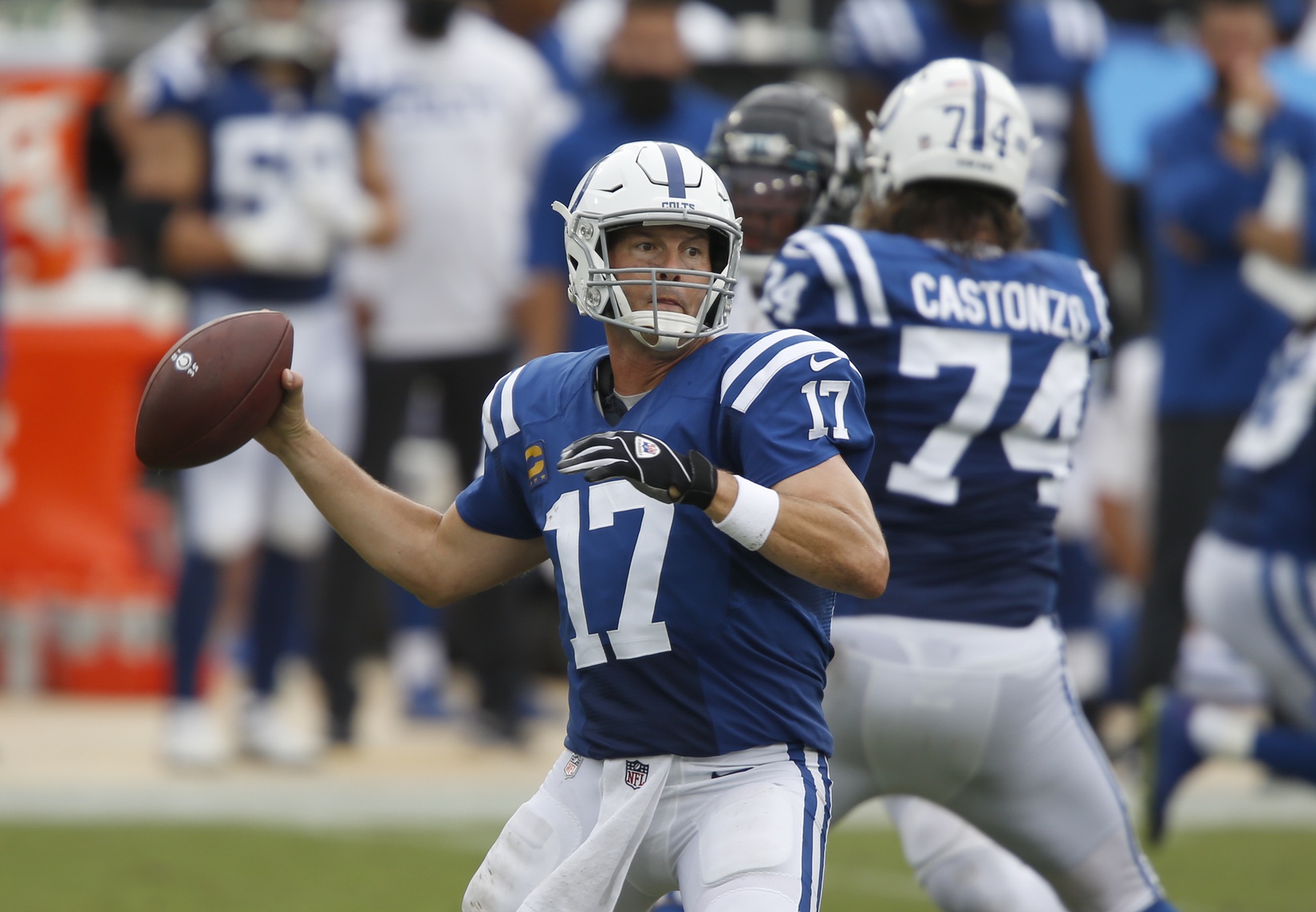
21. Philip Rivers, Indianapolis Colts
Change: Down 5
The Philip Rivers experience has already been a wild ride already in Indianapolis, with single-game PFF grades as high as 86.5 and as low as 36.7. He has benefitted from playing behind the best offensive line that has ever been put in front of him at the NFL level, and his biggest problem has been bad mistakes and costly turnovers. His 13 big-time throws rank seventh in the league, but he needs to avoid the bad plays that have offset too many of those good ones. Rivers is at the helm of a good roster and needs to steer the ship to success, but nothing knocks that off course more than turnovers, and Rivers has 10 turnover-worthy plays already.
22. Cam Newton, New England Patriots
Change: Down 2
By the end of the Seattle game in Week 2, Cam Newton was being hailed as MVP Cam once more, and the Patriots were being heralded as the team that once again fleeced the rest of the league by stealing an MVP and Brady-succession plan for peanuts. Newton was spectacular in that game against high-quality opposition but has yet to come close to repeating that performance, albeit with less opportunity to do so after catching COVID-19 and missing time. Newton’s ceiling is still evidently very high, but he hasn’t consistently hit it since 2015, and this season doesn’t look like doing that either based on the first six weeks. Teams have also adapted quickly to the run-heavy offense the Patriots broke out early, and they have yet to deploy the counterpunch.
23. Daniel Jones, New York Giants
Change: Up 3
The New York Giants have been one of the worst teams in football through the first six weeks of the season, and while he has been far from flawless, I have been quietly impressed with Daniel Jones pretty much every time I have seen him. His fumbles are still maddening, and his big plays have been less frequent this year, but given how little help he has been receiving, I think his baseline of play has been impressive. His overall PFF grade of 76.0 is good enough to rank 17th in the league, thanks in part to some impressive rushing plays.
24. Teddy Bridgewater, Carolina Panthers
Change: –
The Carolina Panthers are certainly a better team in 2020 than many people expected them to be, and Teddy Bridgewater has been impressive for stretches, but I think overall he has enjoyed a little bit of luck in terms of avoiding being punished for his negative plays — at least until the Chicago game. Bridgewater has nine turnover-worthy plays this season, but only five interceptions. At 52%, he also has one of the highest percentages in the league of passing yards coming after the catch, which says more about the work of receivers like Robby Anderson and D.J. Moore than it does about Bridgewater, even accounting for the role quarterbacks play in yards after the catch.
25. Baker Mayfield, Cleveland Browns
Change: Down 7
As PFF’s own Mike Renner declared this week, it’s time to panic about Baker Mayfield following a disastrous showing against Pittsburgh that saw him benched. The Browns have been very good in four out of their six games this season, but Mayfield has not. Even in their four-game winning streak, Mayfield’s PFF passing grade was just 66.3, 22nd in the league over that time, lower than Mitchell Trubisky, who was benched for good off the back of that play. Mayfield has had some big moments, but he still abandons clean pockets too often and is making basic, rookie errors in reading coverages and decision making. That’s hugely concerning for a franchise that thought he was the answer after his rookie year.
26. Andy Dalton, Dallas Cowboys
Change: –
Dak Prescott was on his way to a career year before his brutal injury and would have improved his spot in the rankings from No. 9 overall, but now we must rank Andy Dalton. His first passes in relief of Prescott were impressive, and he was a big part of the team coming back to win that game, but on Monday night against Arizona, he looked poor. Dalton has elite receivers to work with, but his offensive line will be a problem, and we haven’t seen consistently high-level play from him for the better part of half a decade.
27. Gardner Minshew, Jacksonville Jaguars
Change: Down 2
Early in the season, it looked like we might have underrated Gardner Minshew as a player that was too good to tank but no better. Since that point, he has had repeated opportunities to prove that point, but he has floundered. His overall PFF grade is just 65.5, 25th in the NFL, and his adjusted completion rate of 76.2% is only 18th, which isn’t nearly good enough for a player with marginal arm strength that needs to offset that limitation by being deadly accurate with the football. Minshew has yet to grade above 73.0 in a single game this season despite having played some pretty questionable defenses.
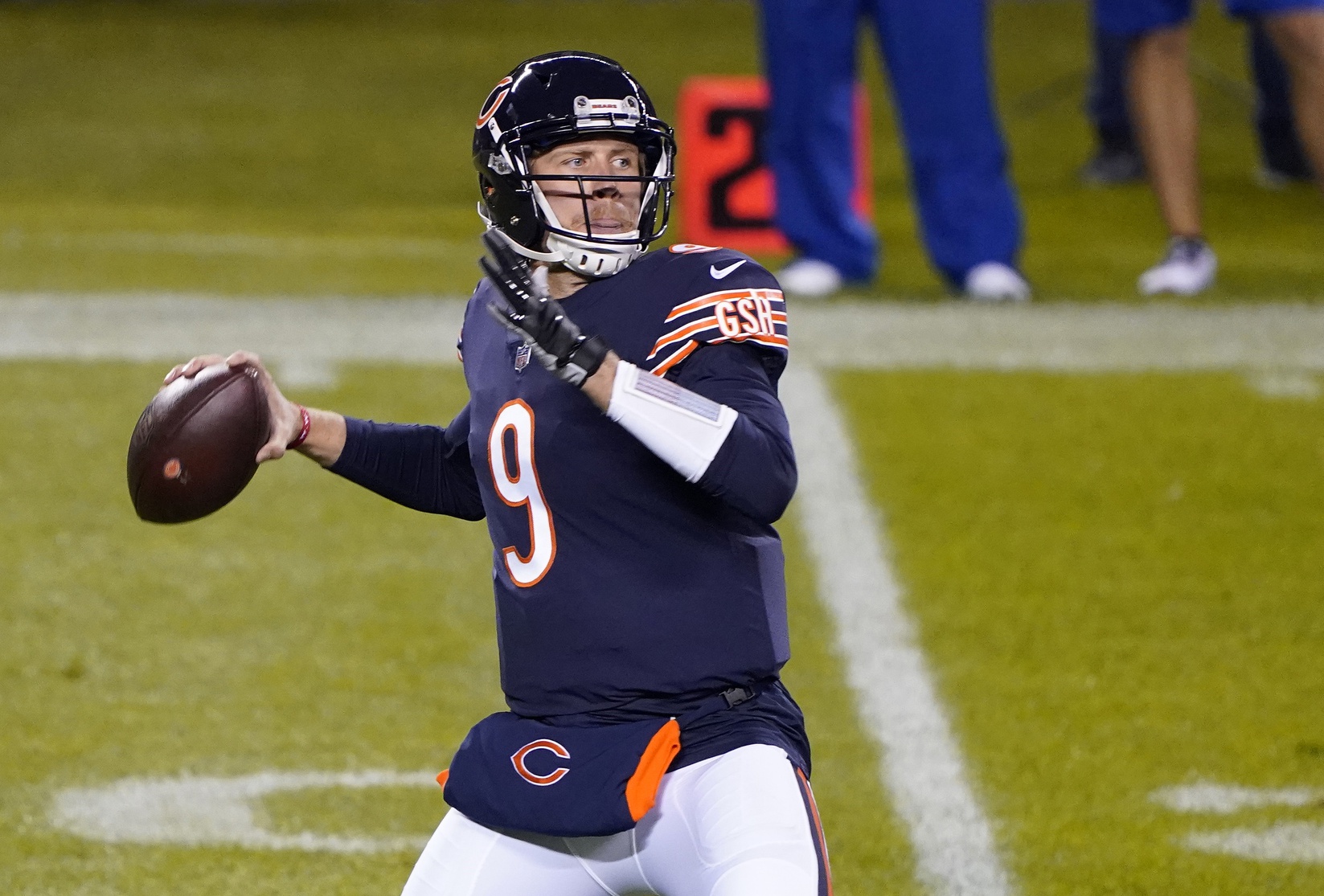
28. Nick Foles, Chicago Bears
Change: Up 1
Nick Foles actually had a ranking entering the season because I didn’t see a scenario by which the Bears actually roll into the season starting Trubisky after trading for Foles to provide competition. Inevitably, Triubisky played his way to the bench, and Foles rode to the rescue. While he saved a win against Atlanta and has demonstrated some big-play capability, he has also been wildly inconsistent and materially provided little upgrade over the man he replaced. Foles has nine big-time throws already but also seven turnover-worthy passes as he maintains his streak as the most volatile quarterback in the league.
29. Drew Lock, Denver Broncos
Change: Up 3
Drew Lock was our lowest-graded quarterback entering the season, and until the New England game, we hadn’t seen anything from him to suggest that he deserved to be much higher. Against the Patriots, his box score numbers were ugly, but he was robbed of much better stats by his receivers and by great defensive plays at the catch point over and over. He had five big-time throws in that game, which almost doubled his career total (six entering that game). His ugly turnover late in the game showed that there is still concerning downside, but we at least saw the flashes that could help him climb the rankings with time.
30. Kyle Allen, Washington Football Team
Change: –
The Dwayne Haskins era in Washington looks to be over already with a combination of poor play and poor attitude consigning him to the bench. That puts Kyle Allen back in the firing line, and while he has been better than last season in limited sample size, he has been stylistically the same player. Allen is reckless with the football and has as many turnover-worthy plays so far (two) as big-time throws despite an average depth of target of just 5.6 yards. Allen isn’t the answer in Washington unless the question is, “Who gives us the best chance of a high draft pick?”
31. Sam Darnold, New York Jets
Change: Down 1
It would be unfair to put all of the responsibility for Sam Darnold’s struggles at his feet, but at this point, he is definitely part of the problem. Darnold has had little to work with, but he has still been unable to provide anything more than brief flashes of talent that we already know exist. Each game there is usually one play that makes you say, “Wow,” but he can’t seem to find more than that. Darnold’s PFF grade from a clean pocket is just 61.5 with a passer rating of 76.1. His time with the Jets may be coming to a close as they head inexorably towards Trevor Lawrence.
N/A, Tua Tagovailoa, Miami Dolphins
Change: –
It would be wrong to rank Tua Tagovailoa given what we know of him so far. We did with Burrow heading into the season, but Burrow didn’t have the unknown quantity of a major injury in his recent history. I’m not suggesting that there are lingering physical problems, but that’s an injury that may take some mental adjustment to return to full confidence once more. Ryan Fitzpatrick had been doing an excellent job for Miami despite an offensive line that still ranks among the league’s worst. Fitzpatrick had an average time to throw that would be historically fast over a full season, so Tua may have his work cut out for him.
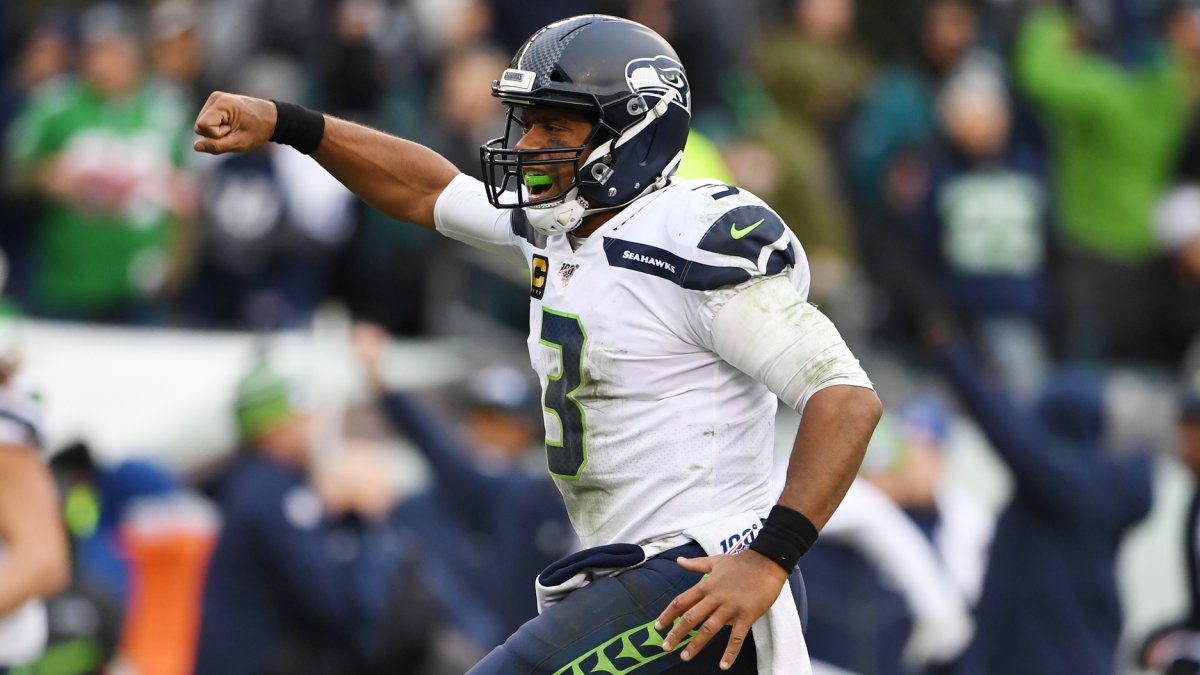



 © 2025 PFF - all rights reserved.
© 2025 PFF - all rights reserved.